Cuenca Health Concerns: Dry Air, Nose Bleeds, Gas, Dentists, Hospitals
Cuenca is a beautiful city high up in the Andes Mountains. The climate here is spring like cool-warm during the day and cold at night. From what we have experienced the healthcare system is good here: good doctors/specialists and clean modern hospitals.
In this post, we’ll share some of the things we learned and experienced while living in Cuenca, Ecuador. We’ll cover dry air, our dentist, and Mount Sinai Hospital. Plus the surprising gas-reducing benefits of oregano tea.
Let’s get started!
Cuenca’s Dry Air Climate
The health concerns that we (more specifically Bryan) have experienced are somewhat odd. But because knowing our little story may help others, I’m going to make a short story, well … long.
Problems With the Climate in Cuenca
When Bryan was a little boy in Canada he was sick every winter with bronchial infections. He was put on antibiotics every year to help fight the bronchial and related ear infections.
As he became an adult these problems disappeared, but when we moved to Cuenca they started coming back.
After about 6 months of living here in Cuenca, Bryan started developing a really strong cough, and his ears began giving him problems. His cough was so bad that it was interfering with his daily life.
He was losing sleep and spending much time during the day in bed. We couldn’t figure out what the problem was because it was much warmer in Cuenca than it was in Canada during the winter. The recurrence of his childhood health problems did not make any sense to us.
We went to the doctor and he was put on antibiotics again and again. I was worried about the damage the antibiotics were doing to his system so we started seeking out a specialist that might be able to get to the root of the problem.
We found an allergy specialist and after many tests, we were told that the climate here was not good for him.
The doctor felt that because the climate changes so much during the day (chilly in the morning, hot by the afternoon, and cold at night) it was kind of shocking his system and causing an allergic reaction.
We were told that moving to a warmer climate would be better for him.
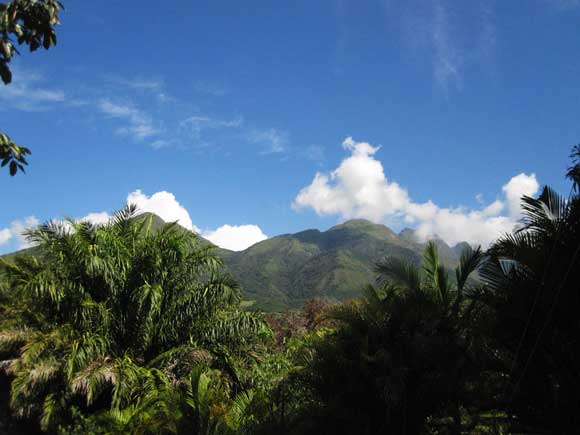
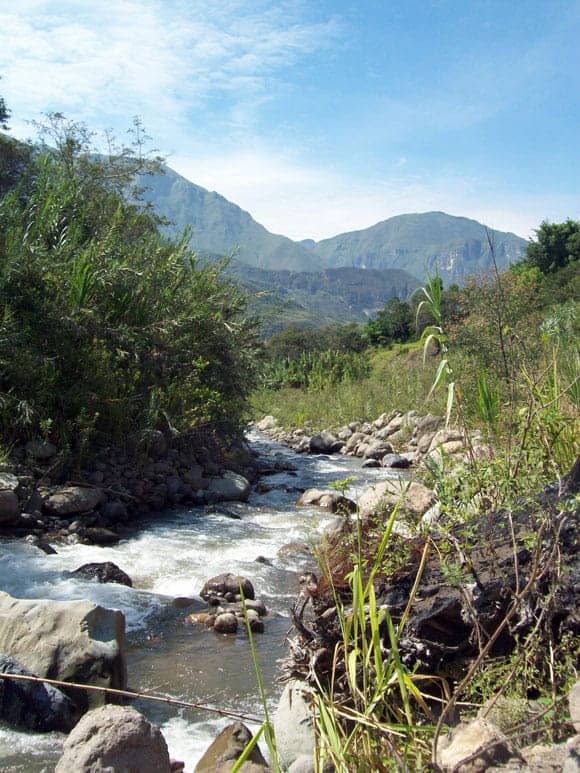
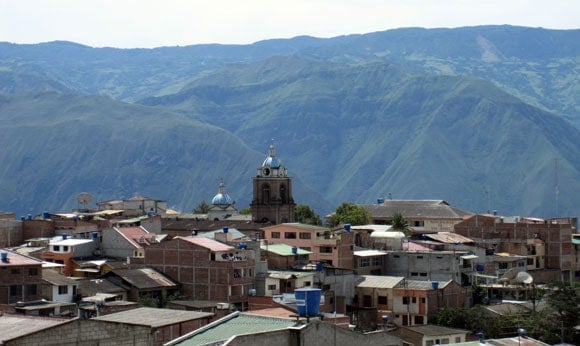
Moving From Cuenca to a Small Town, and Back Again
We packed up and moved to Santa Isabel which a small town in Yunguilla Valley – a subtropical valley about an hour and twenty minutes away from Cuenca.
As soon as we arrived in Santa Isabel Bryan’s health improved and his coughing totally disappeared. We were very happy about that and enjoyed life there, but after a year we needed to move back to Cuenca.
I was very worried about Bryan’s health problems coming back, but we thought that if we rented an apartment in a large building it would be warmer and he would be fine.
We rented a furnished apartment in a large complex for about a month before moving all of our things back. A few days after we arrived his cough started coming back. The apartment was warm, so I realized that the difference must have been due to the dry air, not just the temperature.
Solving the Climate Problem in Cuenca
I started boiling water to put humidity into the air and within a half an hour his coughing stopped! I was shocked at the difference such a simple thing could make, and relieved to know that we could successfully live in Cuenca once again.
When we found an apartment of our own and moved all of our things back we picked up a couple of humidifiers.
We put one right beside the bed so that Bryan could breathe humid air all night long. He no longer has the health problems he experienced when we arrived.
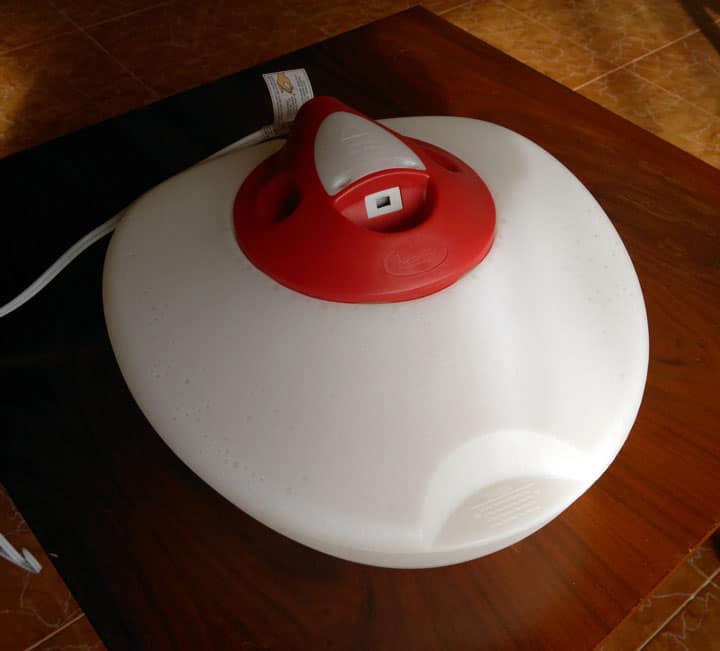
How to Handle Cuenca’s Dry Air
The air is dry here in Cuenca, we didn’t notice it at first but after a number of months, our skin started feeling really dry. We were waking up with a lot of mucus because the dry air was irritating our lungs and nasal passages.
My nose was even cracking on the inside. I know, that sounds gross but if you are having similar problems you know how annoying these things can be.
I didn’t need the humidifier for a serious problem like Bryan had, but I’ve noticed that since we got it we no longer have the mucus problems and my nose is back to normal.
We live in a second-floor apartment, we have no problems with moisture. The humidifier does not cause any problems with mold because the air is dry the moisture put in the air during the night dries up during the following day.
I think Bryan’s lungs are damaged from the health problems he had as a child, so hopefully, you won’t experience the same problems here in Cuenca as he had when we arrived. But if you are experiencing any problems due to the dry air, you might just need to pick up a humidifier.

Update: After purchasing the above baby humidifier in Cuenca, we ordered a cool mist humidifier and the AcuRite Indoor Humidity Monitor on Amazon. Both are highly recommended.
Just be careful not to drop the humidity monitor on a tile floor. It tends to affect performance…
Mount Sinai Hospital in Cuenca
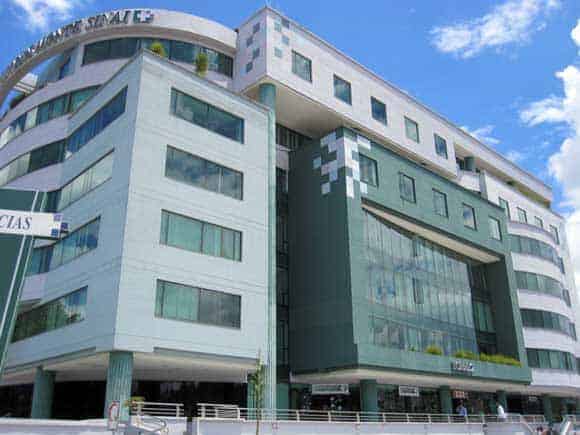
The Mount Sinai Hospital is very modern, bright and clean. There are two large complexes, the main one faces Avenida Solano, a main avenue in Cuenca, and the other directly across from it is on a smaller side street (Miguel Cordero).
Parking is not a problem because there is a paid parking lot right next to the complex on the side street.
Our family doctor referred us and set up the initial appointment, so for the first visit we had a scheduled appointment, date, and time . . . but for subsequent visits, we were simply told which days the doctor was available.
We were then free to choose the day and time we found most convenient, when we arrived we took a seat in the waiting room and awaited our place in the order of arrival. The wait was not long. The specialist was very professional and spoke fluent English which was a great bonus for us.
We were very happy with the experience, and we’ve been told by many that this hospital is the best in Cuenca.
We have heard that it’s also the most expensive, as is the large pharmacy in the downstairs entrance of the main complex.
The complex across the street also has a pharmacy, and we were surprised to find a significant difference in the price of the medication we needed when we checked into it.
The appointments cost about $20 per visit, which was on par with appointments I had in a different clinic with a specialist in a different field. Cost may depend on the type of procedure required, but we are not really sure, we haven’t had many problems requiring medical care since we’ve been here.
Here are some pictures of the complex so you can get an idea of what it’s like. Overall we were very happy with the care we received, it was the same or better than similar healthcare procedures in Canada. The equipment was very modern, the staff and doctors were very caring and thorough.
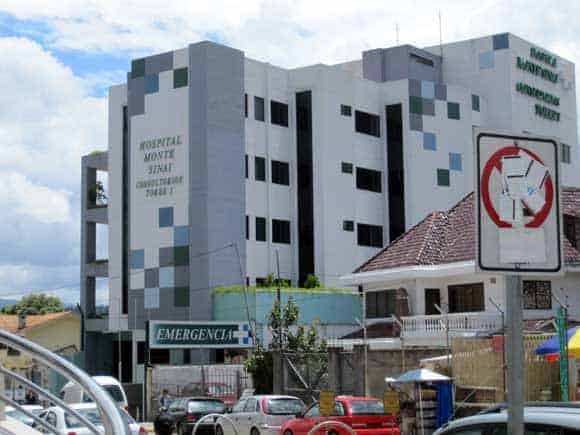
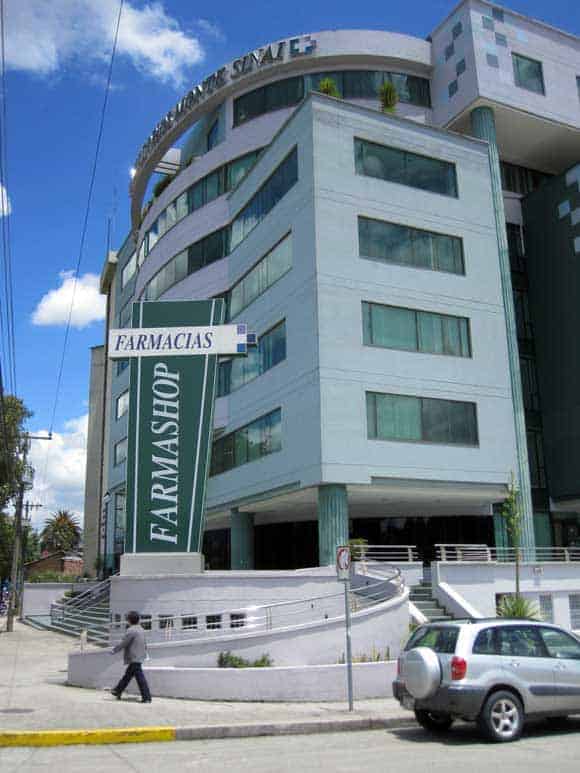

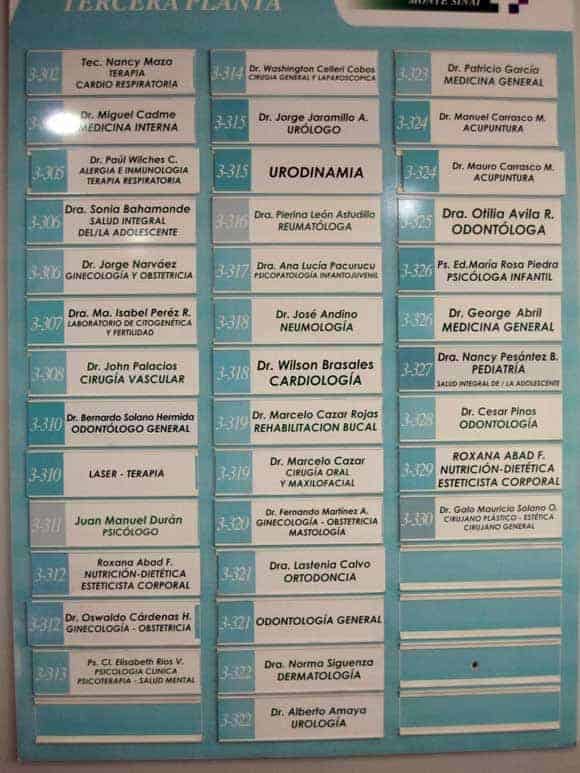
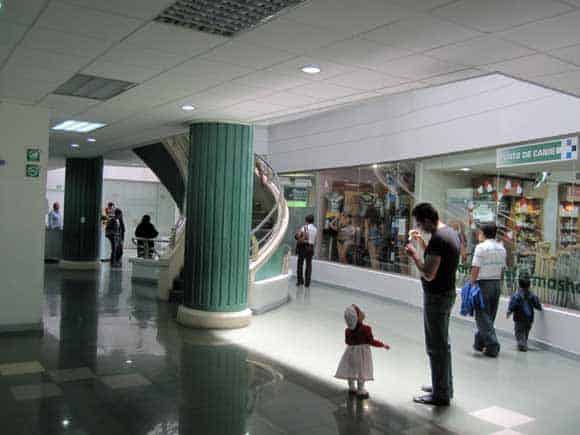
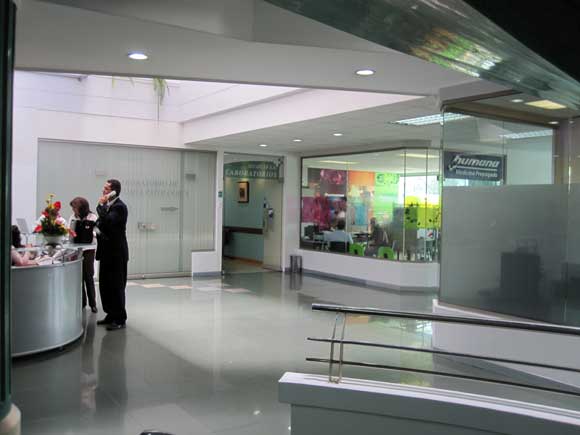
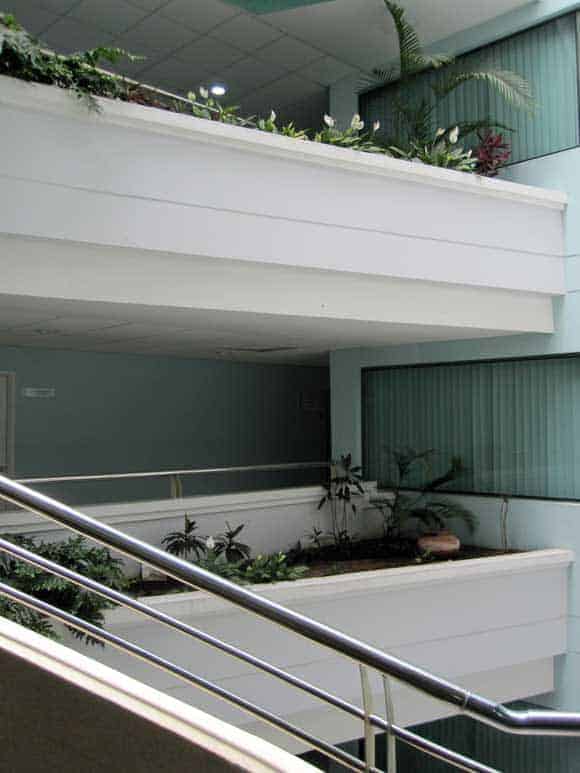
Dr. Jose Acosta: Our English Speaking Dentist in Cuenca Ecuador
One of the difficult aspects of moving abroad was setting up a new network of contacts. We needed to find doctors, lawyers, dentists . . .
We are still building up our group of contacts. So when we find someone good we get kind of excited and want to tell everybody about it.
On that note, we found a really good dentist here in Cuenca. We met Dr. Jose Acosta when he asked Bryan to design a website for his business. As we got to know him, saw his office and the videos on his site we were impressed and decided that we should give him a try.
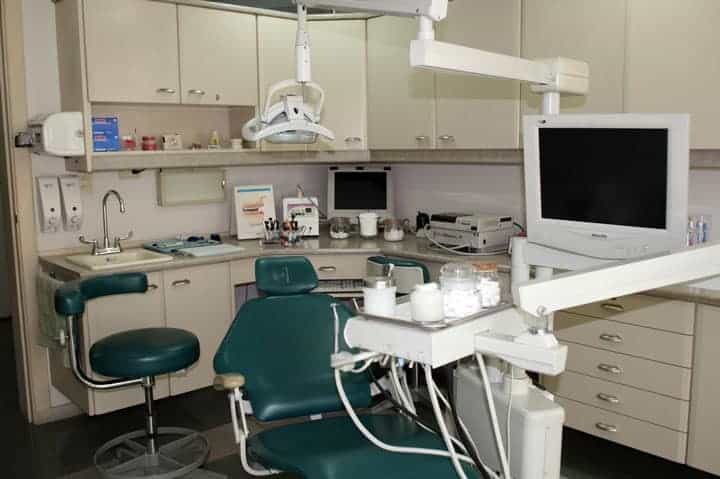
Starting Out Small – A Deep Cleaning
We started out with something simple, getting our teeth cleaned. Dr. Acosta cleaned very thoroughly, even cleaning under the gums.
It was a little painful because some of my teeth are sensitive, but when he was finished my teeth felt so good! He also explained that by cleaning so deeply the gums and teeth would be healthier.
Ialso had some cavities so I had to go back a number of times to have them taken care of. I was really happy with his work so I decided to take an even bigger plunge.
Maryland Bridge Replacement
When I was little my brother and I were play-wrestling and he flipped me over his back. My face hit the floor and my front tooth popped out.
So I have a Maryland Bridge (a fake tooth with wings coming off both sides that are cemented to the real teeth on each side) for my front top left tooth. When Dr. Acosta saw the way it was put in he told me that it was important to have it removed and have a new one installed correctly.
I never really liked the one I had anyway. There were dark shadows on my teeth from the metal wings of the bridge. So for cosmetic reasons as well as the health of my teeth I decided to have a new bridge put in.
Dr. Acosta speaks English so that gave me confidence that if I had problems along the way I would be able to communicate clearly with him. A front tooth is kind of a big deal.
Dr. Acosta was right, the old bridge had been put in wrong and there was leakage behind it causing damage. Once the old bridge was removed he showed me the back of my front teeth, it was not a pretty sight.
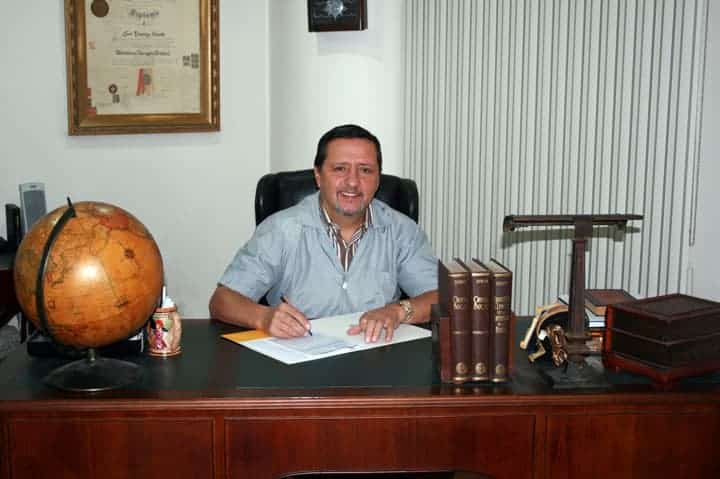
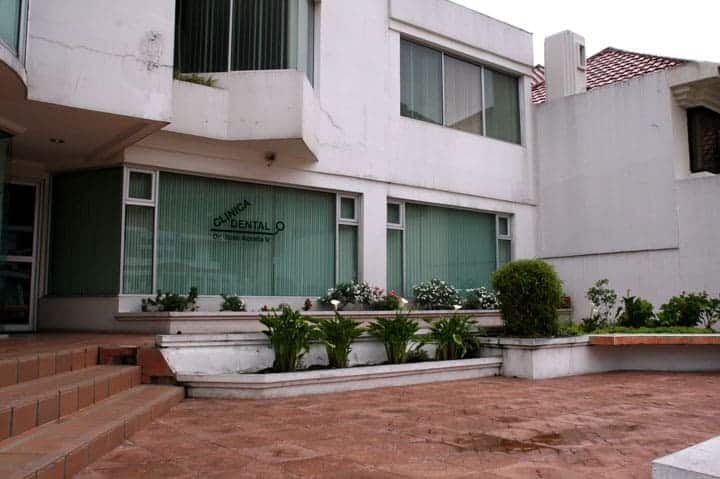
Dr. Acosta did a really good job with my bridge. He had me back a number of times for fittings and even sent me to the lab to make sure the color was as close as possible.
I’m really happy, my bridge looks so much better! And now I know my other front teeth are not being damaged. Dr. Acosta used a different material for the wings of the bridge, so I no longer have the dark shadows on my front teeth.
We will continue to go to Dr. Acosta for all of our dental work, and recommend him to friends.
Have you had dental work done in Cuenca? Let us know about your experience by commenting on this post.
Note: This review is provided based on our own experience. Dr. Acosta didn’t request this review or compensate us in any way.
Nose Bleeds and Intestinal Gas at High Altitudes…
The following section is a post by an American expat living in Cuenca since 2007.
A young friend recently visited us from the States and I was taken aback to find him sitting calmly in the car one day with a wad of tissue protruding from his nose.
What on earth was he doing? He was having a nose bleed. Our friend was in Cuenca for a week and had a number of such episodes. At an altitude of over 8,200 feet, Cuenca is apparently located in the “nose bleed section”.
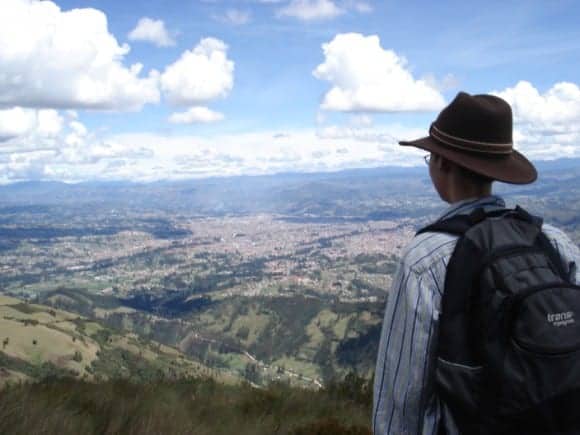
Before visiting the Sierra region of Ecuador it is good to be aware of the side effects some have experienced due to the higher altitudes. At higher altitudes some visitors experience nose bleeds, headaches and a potentially embarrassing phenomenon some call H.A.G. What is H.A.G.?
To explain, imagine the following scenario: You are strolling along one of the many tree lined river walks in Cuenca with that special someone. A gentle breeze hits you in the face and you are enjoying the restful sound of the bubbling river.
It seems that there is nothing to disturb the peace and solitude of the moment. Then it happens: a sharp pain hits you in the gut, your sphincter slams shut and you have to excuse yourself as you desperately seek a private place downwind to relieve yourself.
What is happening to your body? Why does your abdomen feel so swollen? You, my friend, are most likely experiencing something that many newcomers to higher altitudes have but seldom talk about in mixed company.
You have H.A.G. (high altitude gas).

If the subject of flatulence offends you, perhaps you should not read this article.
However, as a service to newcomers to the high altitude of Cuenca, I feel that it is important to “clear the air” and state a fact of life: At higher altitudes, many people seem to have more gas, flatulence, farts, methane or whatever you prefer to call it.
I am no doctor or scientist; I am just giving my own “seat of the pants” analysis of what I have observed and personally experienced.
I have no problem talking about natural bodily functions and over the past few years have done an informal survey of many expats who come to Cuenca and almost all say the same thing: They definitely suffer from (or enjoy, depending on your attitude) more flatulence here in the mountains.
We all chalk up the extra “oomph” in our life to the higher altitudes here. We also find ourselves eating a healthier, and apparently more gas-producing, diet here and that surely contributes to the fun factor.
Whatever the cause, you may want to be prepared for the potential for nose bleeds, headaches and more pressure in your pants as you roam the streets taking in the sights and sounds of Cuenca. Enjoy.
The next section is by Dena Haines.
Eliminate In-Flight Gas With Oregano Tea
Oregano. It’s much more than a seasoning for your favorite Italian dish. It’s also a gas-buster. Especially for flight-related intestinal gas.
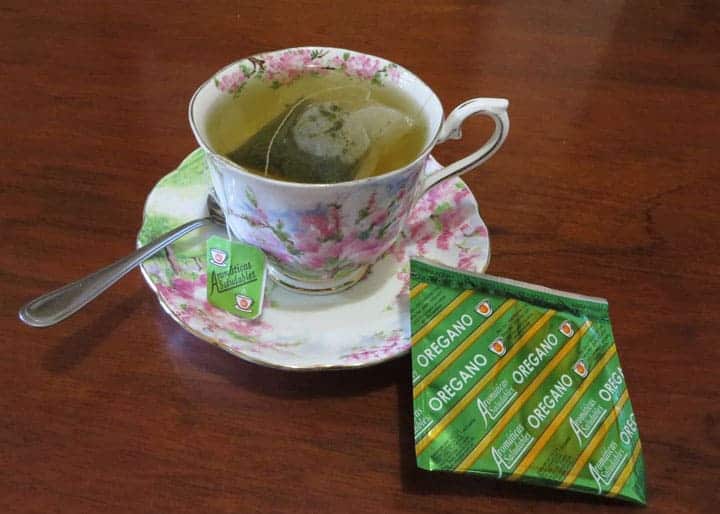
This isn’t really dinner conversation: trapped gas on a long flight (but I know you’ve had it).
You know the gas I’m talking about. The gas that makes you unbutton your pants during a long flight. The gas that builds up and makes you squirm in your seat.
Fight that gas with a hot cup of oregano tea!
Eliminating Painful Gas With Oregano Tea
Long flights are notoriously hard on travelers – digestively speaking. Trapped gas sounds funny – but it can be very painful. It can be hard to move and even hurt to breath.
I experienced this on a long flight from Canada to Ecuador. When we landed in Guayaquil a friend suggested oregano tea. I was skeptical but tried it anyway.
And within 20 minutes the pain was gone!
Now, I never travel without oregano tea.
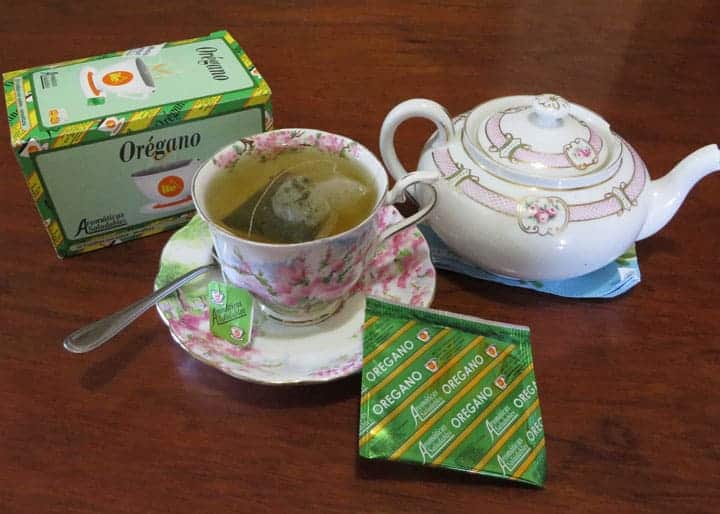
3 More Health Benefits of Oregano Tea
Turns out that oregano tea has a number of health benefits. A few are particularly helpful for travelers:
- Drinking oregano tea regularly can help fight parasites and amoebas.
- It has powerful antibacterial properties that fight the growth of many different kinds of bacteria.
- It also helps with headaches, insomnia, muscle spasms, congestion, diarrhea and motion sickness.
Making Oregano Tea
If you can’t find oregano tea bags at your local store, you can easily make it at home.
Pick up some oregano (the same stuff you use in your pizza sauce) and steep it in boiling water.
Strain out the leaves (an infuser makes this much easier) and add some honey.
How much dry oregano should you use? About the same amount you would see in a normal bag of tea.

In many other parts of the world, it’s commonly found packaged in tea bags.
Your Turn
What’s your best in-flight gas story? Have you experienced the gas-busting relief of oregano tea? Do you have any other health tips for travelers? Please share your comments on this post.



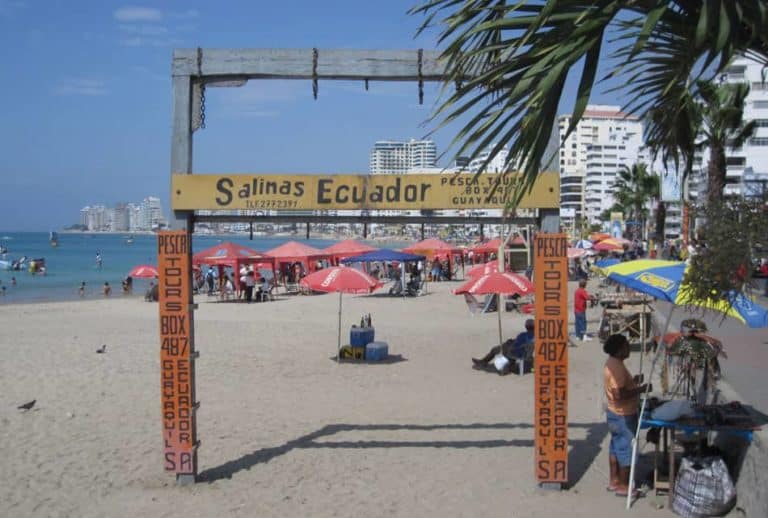
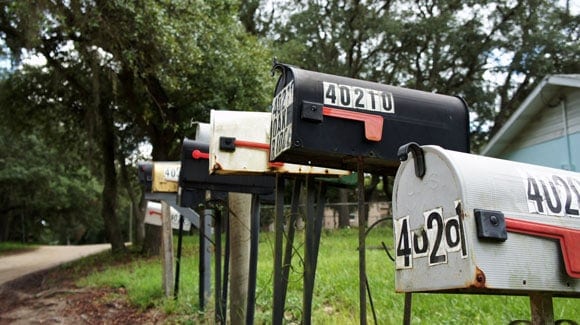
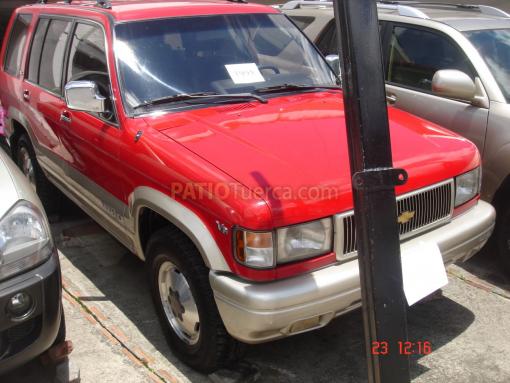

I spent a month in Cuenca and developed a cough that I couldn’t get rid of. Worst experience in Cuenca is the air pollution from vehicle exhaust especially buses! Terrible!
Deat Bryan and Dena
I’ve read many of your blogs before but came upon this blog regarding your allergies and finding help with the humidifier. It makes total sense! I’ve been here 2 months and didn’t know why I couldn’t get rid of my cough. Guess what I just did as an experiment? I hooked up my coffee drip maker with just water as a temporary measure to see if my coughing would stop and it did! I’m going to get a humidifier immediately. Thanks so much! Carla
Stumbled on your site when I googled allergens in Cuenca. I’ll try a humidifier as I’m experiencing a dry cough and stuffed nose since I arrived. The fumes really get to me, also.
Do you, by chance, know what trees/grasses grow here as I am allergic to quite a few in the hill country of Texas– especially cedar. I’m looking at relocating here and don’t want to make the same mistake twice.
Great site with helpful information. Thanks!
Shelley – Fredericksburg, TX
I have mild asthma and am currently living in a wet/cool climate at sea level. I notice from the net the high levels of humidity in Cuenca throughout the year. After reading this informative blog with comments, I understand that one needs a humidifier in Cuenca. Because of the high humidity, I would have thought one would need a de-humidifier?
But perhaps those are only for the tropical coast?
-Winston
We’ve noticed that many online forecasts get it wrong. Sometimes they show the weather from the coast as Cuenca’s weather. From our experience, the only reason someone would use a dehumidifier in Cuenca is if the house was poorly constructed and the rain water is getting into the walls. We’ve run a humidifier at night for years and still the air is dry by the next night.
I thought when I first moved here that it was humid, but I found out the opposite. Humidity here seems to run 40-60%. I also have asthma and had trouble with dry throat at night but after reading Bryan’s article I bought a humidifier and if helps mucho!
I do have to stop often to caught my breathe here and that has not changed in two years!
While the air seems dry and acts as if it is dry, the humidity is actually around 70 %. What you are experiencing is the lack of atmospheric pressure. At sea level, atmospheric pressure is 14.7 lb per sq in. At 8000 ft, it is more like 10 lb per sq in. What this means is that the surface tension of the water is very thin. This allows the moisture to evaporate very quickly. So you are correct to treat 70% humidity as if it is dry. It is acting that way.
As to the allergens, The Eucalyptus is one of the most allergenic trees out there. Indigenous to Australia and brought here in the late 1800’s. As so many things in Australia are toxic or just plan dangerous. That is why you see so many people with scarves over their faces. When I comb my hair I find a fuzzy residue trapped in my comb. Kind of looks like dust bunny material. Hence, more coughing. Try a Homeopathic allergenic support system from the drug store or natural store. One snort and I’m good all day. Bee pollen is good also.
I found all of these articles interesting. But, if you do a search for Cuenca with the word mold and humidity in the headline…….or do the same on you tube, there will be a gentleman who speaks about the mold in homes. Many times people who are affected by mold get numerous lung issues…….his entire family came down with this. CUENCA is very prone to mold which is very very dangerous. I have had a mold illness for the past 12 years. Please be careful ! Humidifiers will not help the mold situation. Listen to the you tube programs…..he has 8 on there and then you decide. Good luck.
Thanks for your concerns Mary. While it’s true that some homes have mold problems, from my experience I haven’t seen this to be common.
There are poorly constructed houses with insufficient ventilation. Some house are built very close, and without rain gutters, so that rain water runs down between the walls of the two homes and soaks through the concrete. This will causes mold growth. I’ve known a number of families affected by this – both expats and Cuencanos. They had mold growing up the walls and became sick with lung infections.
Generally speaking though, the air is dry. In Cuenca we’ve lived in well constructed and well ventilated homes and haven’t had trouble with mold. But we did have symptoms as Dena describes in the post. My symptoms went away almost immediately upon using the humidifier. The humidifier running every night / all night never caused any mold growth in our home.
The thing to remember when reading blogs and watching videos is that we all write about our experiences. It isn’t that one of us is right and the other is wrong. It really depends on our personal experiences.
Our family is moving to the Cotacachi area this Spring from the USA. I would like to ask you about medical care for you daughter. Have you found a local pediatrician for her – one whom you trust and who speaks English? ALso what about Dental, eye and orthodontic care? Do you fine these all accessible in Ecuador? That is my primary worry. Our son is 13. We lived in granada, Nicaragua for a while and the medical care was sub par. No orthodontists anywhere… For example, if your child comes down with a horrid stomach bug, what do you do – who do you go see. Anything you can offer would be completely appreciated. Thanks, Noreen
I am 64 with severe asthma, moving to this altitude was a challenge along with being out of shape and overweight. I could not walk a block without stopping to caught my breath, but I was determined to get in shape. Now minus 35 pounds I stop less to caught my breath for shorter periods of time on my daily walks, but at night I was having trouble with coughing and congestion which lead to several infections.
After reading your article I bought a humidifier and what a difference it has made. It does loosen me up and I sleep through the night much better.
I was surprised when I moved here how dry the air is even when it says we have a high humidity. Plus I do drink lots of water, even during the night.
All in all my asthma is much better after one year here and I am using less medications.
Your site and all the information you give has been a real help to me and I am sure many others wanting to move here or all ready living here. I do recommend your site and I also mentioned you in my book: Why Ecuador for me – now available on Amazon!
Thanks again for great advice!
Gary
Hi Gary – I’m so happy to hear that the humidifier is working for you. It has become a necessary piece of equipment for our life in Cuenca.
Thanks for recommending us on your site and in your book!
Bryan
When we first moved to Cuenca we lived at about 9400 feet just outside of the city. It was difficult at best and a very stupid mistake to live there. We moved down into the city and lived at about 8300 feet above sea level and that helped but we still had problems because of the pollution in the city. So we moved out of Cuenca to a small town in the Loja province. There is no pollution to speak of and we live at just a little over 4000 feet and that has solved most of the problems we experienced in Cuenca. It’s also a lot warmer here so you don’t need a heater, though ceiling fans would be a big help. Sometimes moving to Ecuador is not about living in the jewel city of Cuenca. There are a lot of great choices for places to live in Ecuador.
My husband and I recently visited Cuenca with the idea of living there, but I developed a violent cough and sore throat. I am convinced it was from the exhaust of vehicles using low-quality diesel fuel. I was alright for a while when we arrived in Quito, but quickly developed a deep, deep cough. It was always worse when vehicles passed, and in the city it was pretty constant. I eventually had to wear a construction mask, which helped. I found out that surgical masks don’t provide any relief.
My wife and I spent the month of April in Cuenca and enjoyed it very much. My wife suffers from fibromyalgia and it has been very hard on her here in Ohio. For the month we were in Cuenca, she claims she had little or no trouble with it. We are wondering if the altitude (reduced atmospheric pressure on her body) could have had this wonderful effect. Any others out there had this or a similar experience? Thanks for all your great posts. We are returning in October and November. Glad you made it back to Cuenca and are in good health Bryan.
Dennis,
Hello! I have Fibromyalgia, and although I had a few rough days while we were in Cuenca — usually due to not enough sleep — I think that the lifestyle of walking everywhere helped me immensely! This type of movement keeps everything more relaxed, and helps the body in many other ways. I hope to see you when you return to Cuenca. We’ll be back in August, hopefully for long-term! 🙂
That’s a very interesting comment Dennis. My wife doesn’t have fibromyalgia that we know of, but we spent a few days in Guayaquil at pretty much sea level and her chronic body and neck pain seemed to be greatly reduced and almost eliminated there.
The food in South America, in particular Ecuador, is also very different than what you’re likely eating in The States. I’m not discounting the pressure hypotheses, but additional factors could be reduced consumption of wheat/grains, GMOs, and pesticides, eating more organic and grass fed vegetables and meats, eating fewer processed foods, less hydrogenated oils, trans fats, and high fructose corn syrup, or some combination of those. Reducing these irritants in your diet can help reduce overall inflammation in your body. It would be worth an experiment to try eating like that at home to see if it helps those chronic conditions.
Thank you so much for this information! My husband and I were in Cuenca for 2 1/2 months and during that time he got sick 2 times, and also had a cough that he couldn’t get rid of. As soon as I started reading your article on moving away from Cuenca to the Yungilla Valley, and why, I thought of the humidifier. I grew up in “high desert” and we needed a humidifier as kids, too. As soon as we move to Cuenca in August, a humidifier is one of the first things that we’ll buy. Thanks for your candor even when dealing with “gross” health issues. It has already helped us prepare for our move. BTW, we need to buy a memory foam bed as soon as we arrive. Do you have any recommendations? Thank you.
Thanks for the feedback. The humidifier has made a huge difference to my health.
About a memory foam bed, I’m not really sure. You might want to check with Su Casa – they sell some high end products. Also, there are some good furniture shops in the center – we found a very good mattress there. It might take a little searching…
All the best on your plans!
Bryan
Just heard from a reader about memory foam in Cuenca. Here is what he has to say:
Hope this helps.
Dena,
Thanks for advice on Sleep Apnea,I’ll bring my device. Another question, What employment demand exists for Register Nurses (BS Degree)there, and where are Medical Schools in Ecuador? Grand daughter asked me to check it out. Thanks, Glen Phibbs
We both have congestion here and think that a humidifier could help. Where did you purchase yours?
You’ll laugh… we found them at Bebe Mundo (Baby World). Less than $30 each, we bought three. I even have one in my office – works great. Bebe Mundo is in the Plaza de Las Americas (with Supermaxi and Su Casa). It is at the intersection where the work is being done – where Gran Columbia meets Avenida de las Americas.
Hi Patty,
Babe Mundo is on the front of the building close to the road. There is a ramp that takes you up(it’s not on the main level like the other stores)to the front door.
I hope it helps with your congestion.
Hi Dena/Bryan,
Excellent read on health issues,common to one degree or another to all of us. My problem is sleep apnea, insuffient Oxygen when sleeping. So, higher,dryer might be problematic. Your writings on Ecuador, Cuenca, etc. are wonderful. At age 75 I’m generally in good health but adequate medical care is important for me. I had been considering northern Argentina when I found your website. Do you know of anyone who shares info, as you do, but for northern Argentina. I’m flyng to Houston the end of May to visit some Consulates there. Can anyone provide me with information on agriculture,owning acreage,marketing food products in these region (Ecuador or Argentina). Thanks, and keep up the good work. Glen Phibbs,Oklahoma, USA
Hi Glen,
I’m sorry that I can’t help with the information you are looking for.
My father in-law has sleep apnea as well. He brings his sleep apnea machine with him when he visits us, and it seems to help.
Thanks for your comment.
Humidity inside of the apartment could be much worse if you use electric heaters. Bigger the difference between inside and outside temperature, less humidity you will get inside, so information from wunderground.com is not very meaningful, if heaters are used.
Hi Alex,
We do use electric heaters. We didn’t have them when we arrived, we picked up a couple when we moved back to Cuenca. They help take the chill of in the bedrooms at night. We usually put them on for a half hour or so before we go to bed.
Thanks for your comment.
Bryan, I understood there were no electric heaters in Cuenca. Glad to hear you found them. I will not sleep with oil heater in a bedroom as I got very ill once via oil heating. I found some small ceramic heaters on amazon.com. May I ask the price range there? I don’t want a toasty place, just the ability to take off the chill.
Your information is SO helpful, thanks.
We did have an electric heater but it burnt out pretty quickly. The oil heaters don’t burn oil – they are electric and use a sealed, oil-filled container to radiate the heat.
My guess would be the dust & diesel smoke in the air might contribute — particularly from the buses. It gets to a lot of people here. I’m glad the humidifier helps Brian’s lungs & bronchial tubes.
I don’t think it is as much a lack of humidity here in Cuenca, as it is where you have moved here from that will determine how you are affected. Three months after I arrived, I came down with a bronchial infection and, I too, thought it might be attributed to the driER air here. But then again, I came here from metro Houston – your proverbial steam bath city on the Gulf of Mexico. And I too, had asthma as a child, not to mention 40 years of smoking behind me.(My lungs are certainly not ready for prime time.) But to call Cuenca a place of low humidity is not supported by meteorological data.
For example, according to the weather site wunderground.com, humitidty today is ranging from 50% to 90%. The last few days have been similar. A spot check of various days over different months has humidity from 20% to 100%, usually highest in the morning, and lowest at midday, according to their historical data.
I’m sure that people coming here from certain parts of Canada and the U.S. Pacific Northwest will feel that Cuenca is quite dry, whereas transplants from places in Arizona and New Mexico will feel like a wet sponge.
I’ve been here about ten months now and seem to have acclimated. Nevertheless, I may invest in one of those humidifiers that’s been recommended.
Ray
Hi Ray,
I think you may be right about how the climate here will affect you depending on where you are coming from.
Bryan did not have asthma as a child. But I do feel that the bronchial problems he had damaged his lungs and that is why he has problems with the climate here in Cuenca. I do not suffer from the same problems.
Thank you for commenting.
Hi Dena. So glad the article had a happy ending, and I know how much you liked Cuenca, so you to much be happy with the outcome.:) Hope all is going well. Look forward to reading your next blog, and Drew’s as well.
Lisa
Hey Lisa,
We are really happy as well, we didn’t want to have to get used to a new area again so soon.
It was nice talking with you last night 🙂
I was very surprised to here the air was dry in Cuenca. I guess it’s just a little too cool too often.
I know a very, very effective Ayurvedic method for dealing with the dryness that I think you’d very helpful. I use to suffer severe problems (much like Bryan) and this fixed by body instead of fixing my surroundings.
It’s extremely inexpensive (20 or 30 cents a day – U.S. price — probably pennies in Cuenca). If you’d like instructions send me an email, I’d be glad to help.
Thanks for the great blog and info.
Added benefit of humdifying dry air is that you protect the health of your wooden floors and/or wooden furniture, so they will last much longer.
To last, wood requires a minimum level of relative humidity humidity which varies with temperature (at 65/75 degrees ideally about 50/55%, can be a bit lower). Otherwise, while doing its natural absorbing and exuding moisture it will dry out, crack and split due to too much contracting and expanding.
A good indicator that your air may be too dry or too moist is when you see the wood deteriorating (cracking or mold).
Hello Dena,
here is an old, old Grandma recipe for your nose, and Brian’s lungs.
Every time we are bothered by a cold, coughing, sneezing, mucus and the rest of it, we wet a towel with vinegar (pure apple vinegar is best), and hang it over night over a chair next to the bed. Three days in a row and you should be fine. The smell of the vinegar is the only downside, but will very quickly disappear with some air ventilation.
I hope this little trick will help some of your readers too.
I really liked this post Dena. Very informative but also enlightening. Some people come here for a few weeks and look at you funny when you mention different health issues related to living here. We’ve had our share of issues since being here, but not near as severe as Bryan’s. Whether we’ll be in Cuenca long term or not, I am not certain. But I am interested in the realities(health issues etc.) of living in coastal Ecuador. If you were ever inclined to write about coastal Ecuador, I’d be interested in reading it.
Hola Jim,
My husband I have lived on the coast now for 5 months in San Clemente. Our main concerns regarding staying healthy is staying hydrated and avoiding being out in the sun for extended periods between the hours of noon to 3. Rainy season has ended and we now have hot, humid weather. We use dehumidifiers in our closets to control those problem areas. I’ve had a bit of hayfever issues off and on the last couple months, seems to worsen on cloudy, breezeless hours/days. All in all, seems to be a healthy place to live. According to the locals, the weather will cool off a bit and the humidity should lessen. Hope this helps.
Another great article Dena and Bryan..thanks !
Mary and John
That is a help, thanks Mary and John.
Amazing how ambient humidity can have such a drastic impact. I come from the midwestern USA, where it tends to be humid half the year and dry the other half. My father for years suffered terrible “sinus” headaches which always started during autumn and lasted until the next spring. No doctor could help him. Once we stayed somewhere else for a week over Xmas, and the whole time my father suffered no headaches. Turned out someone else in that other house had suffered the exact same types of headaches some years earlier, and an old country doctor suggested getting a humidifier to make the air less dry. My father did the same and his suffering was ended. The moral is, sometimes we have to find a way to “cure ourselves”.
Hi Charles,
Thank you for sharing your story.
I think another moral could be that, sometimes complex problems have simple solutions.
Hi, this was a good post with good information, as usual.
I have also had problems with my respiratory system in Ecuador. In addition to the dry air that you mention, another factor for me was all of the open-air burning of brush, trash, etc. in the semi-rural area outside of Ambato where I lived, as well as ash from Tungurahua volcano, which was only a few miles away. We could see the ash coming out of the volcano. It was not visible in the air around our house, but we knew it was there, and it irritated my nasal passages.
When I lived in Quito, I complained every day about the air pollution to anybody that would listen, but the air in Quito never made me sick as the dry and smoky air near Ambato did. The air in Ambato looks much cleaner than the air in Quito too.
Some of your readers might not know that the climate in Ecuador varies not only between the three regions, coast, sierra, and oriente, but also within each region. In the sierra there are some areas that are practically desert, just north of Quito in particular near La Mitad del Mundo. There are also areas where it rains a lot, and areas in between the two extremes.
Next time Flor and I will be looking for somewhere to live that is not quite as dry as Ambato was.
Maybe Brian has got asthma. I have mild asthma. When I lived in Alberta, where the air is really dry, my symptoms were worse. When I moved to Quebec where there is much more humidity, my symptoms were not as bad. Comfortable humidity should be between 25 to 50% humidity. We use a wood stove in winter, so we have two humidifiers that work all through the winter months.
Thank you so much for this great information. We’re moving to Cuenca in the fall and could run into the same situation. Currently we are living in a high, dry climate (New Mexico) and added humidity helps here. Happy for you both that you can stay in Cuenca. Your blog is really helping us prepare for the move. Take care, Susan.
Hi,
I have severe asthma but I have lived in Phoenix, Arizona for 18 years which is very dry. I am wondering if the altitude and rain in Cuenca will impact my asthma?
Thank you for the information.
Lee
Hi Lee,
This is an interesting question. I don’t know if the altitude affects the way the humidity (or lack of) here affects people. It seems to me that it does, but that is just an opinion based on the problems Bryan has had. I am no expert, but because we get good rainfall here and everything is nice and green, it’s the only thing that makes sense to me.
It’s best if you talk to a doctor about your health concerns. And if you plan a trip to see what it’s like here, make sure it’s long enough so you can get a good idea of how the climate will affect you. We didn’t start noticing problems until we had been here for a number of months.
Thanks for your comment.